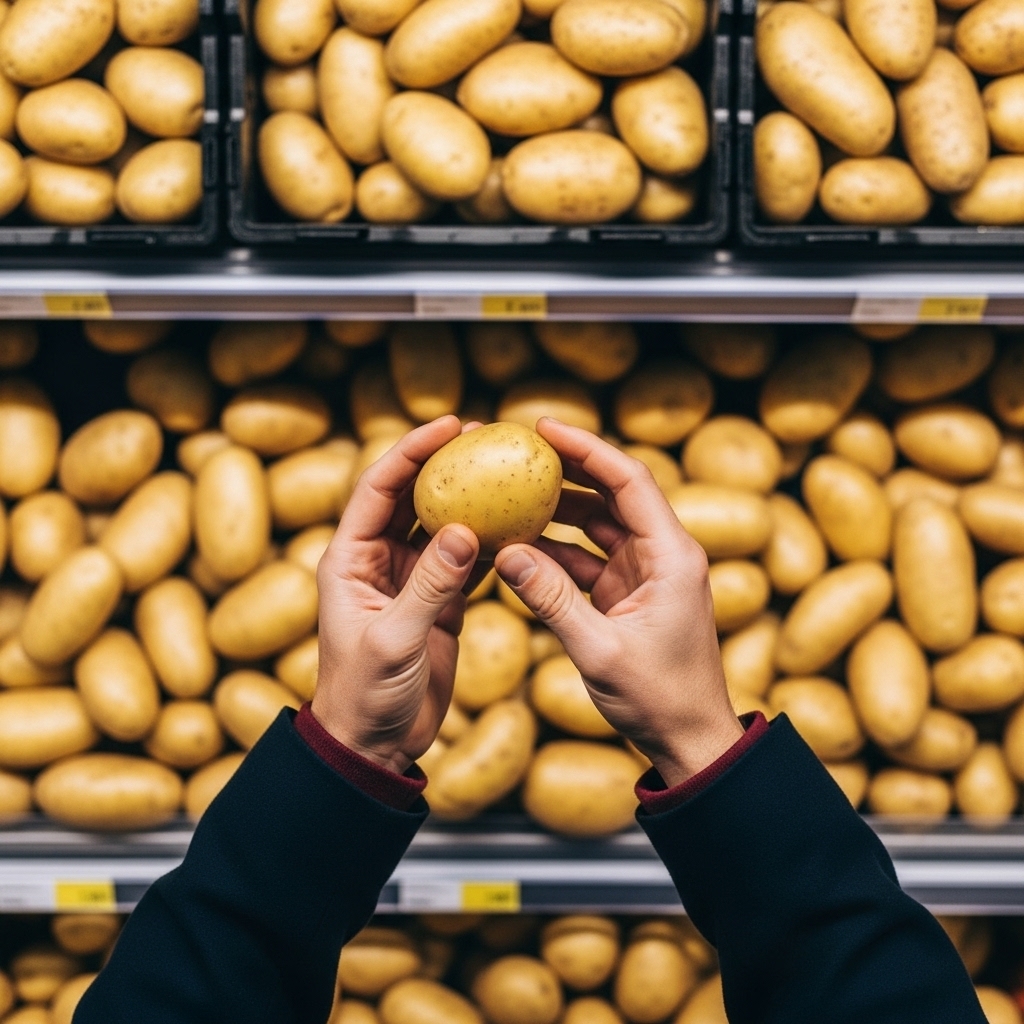
We’ve all been there: you buy a fresh bag of carrots or potatoes, only to find them limp, sprouted, or moldy in just a few days. Knowing how to choose root vegetables is the key to avoiding this frustration, extending shelf life, and getting the most out of your grocery dollars.
In this Shop Smart guide, you’ll learn the foolproof 3-Point Inspection System to select the freshest, longest-lasting root vegetables every single time.
Table of Contents
- The 3-Point Inspection System: Your Key to Lasting Freshness
- Rule #1: The Firmness Test (The Most Important Indicator)
- Rule #2: The Skin Check (A Window to Quality)
- Rule #3: The Sprout and Spot Scan (Signs of Age and Decay)
- Putting the System into Practice: Aisle by Aisle Guide
- The Smart Shopper's Final Blueprint
- Frequently Asked Questions
- References
The 3-Point Inspection System: Your Key to Lasting Freshness
- The Firmness Test: Fresh root vegetables feel firm and heavy for their size.
- The Skin Check: Smooth, unblemished skin is critical for long-lasting freshness.
- The Sprout and Spot Scan: Avoid sprouting, wrinkled skins, and discoloration.
Rule #1: The Firmness Test (The Most Important Indicator)
Firmness equals freshness. This is the golden rule for all root vegetables. When a root vegetable feels firm and dense in your hand, it’s a sign that it’s properly hydrated and hasn’t started breaking down.
What to Feel For:
- Pick up the vegetable and give it a light squeeze. It should feel solid, not soft, spongy, or squishy.
- Compare similar items—firmer options often last longer.
- Over time, root vegetables lose moisture, leading to softness. Softness is the first sign of decay and reduces how long your produce will last after you bring it home.
- A heavier vegetable is often better hydrated compared to a lighter one of the same size, meaning it’ll stay fresh longer.
Rule #2: The Skin Check (A Window to Quality)
What to Look For:
- Skin should appear taut, smooth, and relatively unblemished .
- Minor surface imperfections (like tiny scars) are okay, but deep cuts, large bruises, or gashes are NOT.
- Wrinkled skin is a sign of age and dehydration—choose smoother alternatives.
- Scratches or open wounds on the surface are entry points for bacteria or mold, accelerating spoilage. Additionally, wrinkly or loose skin means the vegetable has already started losing water and freshness.
Rule #3: The Sprout and Spot Scan (Signs of Age and Decay)
If environmental controls are the setup, time is the ticking clock. Perishable foods are highly time-sensitive, making close attention to dates and duration essential.
- What to Look For:
- Sprouts: On potatoes, this often appears as small shoots at the eyes of the tuber.
- Green Spots: Green patches on potatoes mean exposure to light and the presence of solanine, which can be toxic. Avoid these entirely.
- Dark or Soft Spots: Indicators of rot or bacterial activity—these are not salvageable.
-
Why It Matters:
Sprouting and rotten areas suggest the vegetable is past its prime. Even cutting away bad spots leaves a shortened shelf life.
Putting the System into Practice: Aisle by Aisle Guide
How to Pick Potatoes at the Grocery Store
- Firmness Test: Potatoes should feel dense and firm. Spongy spots are a red flag.
- Skin Check: The skin should be smooth and free of wrinkles, cracks, or deep bruises.
- Sprout Scan: Avoid potatoes with visible sprouts or green spots—these signal age or improper storage.
How to Pick Sweet Potatoes from the Grocery Store
- Firmness Test: Sweet potatoes should always feel stable and heavy for their size
- Skin Check: Choose smooth-skinned sweet potatoes with even coloring. Avoid shriveled or cracked ends.
- Sprout Scan: Sprouts in sweet potatoes indicate starch conversion, which changes their texture and shortens their shelf life.
Selecting Fresh Carrots
- Firmness Test: Carrots must feel consistently hard along their length. Avoid limp or bendable carrots.
- Skin Check: Look for bright orange roots with smooth skin. Avoid ones with cracks or flaking surfaces.
- Sprout Scan: If carrot tops (greens) are attached, they should be fresh and green, not brown and wilted.
Choosing Beets and Turnips
- Firmness Test: Both should feel heavy and solid, without signs of sponginess or soft spots
- Skin Check: Beets and turnips should have unbroken, taut skin. Minor dirt is okay, but avoid gashes or deep abrasions.
- Sprout Scan: For beets, greens should look fresh (if attached). Avoid turnips and beets with excessive sprouting or soft, rotten tops.
The Smart Shopper's Final Blueprint
Mastering the 3-Point Inspection System gives you complete confidence every time you shop for root vegetables. By checking for firmness, smooth skin, and the absence of sprouts or spots, you can ensure optimal freshness and shelf life for your groceries.
This simple strategy helps you save money, reduce food waste, and enjoy better-tasting meals. Once you’ve trained yourself to look for these signs, choosing the best of any pile will become second nature!
